
A killer-thriller mystery, a loony-cartoony history, and a beautiful tribute turned more timely than anybody knew
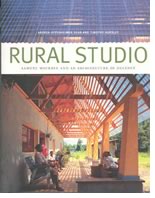 The
Work of Genius
The
Work of Genius
Rural Studio: Samuel Mockbee and an Architecture
of Decency, by Andrea Oppenheimer Dean and Timothy Hursley. (Princeton
Architectural Press, 2002). Much has been written about the work of Samuel
(Sambo) Mockbee, FAIA, since he was awarded a MacArthur genius grant in
2000. This new offering is the most definitive analysis yet of Mockbee's
contributions—through the Rural Studio—to rural, dirt-poor Hale
County, Ala.
Mockbee cofounded the Rural Studio with fellow Auburn University Professor D.K. Ruth almost a decade ago as an experimental course. It has become successful beyond all expectation, and Andrea Dean's aesthetically attuned and technically insightful prose sets out a thoroughly readable narrative describing its history through 13 projects that its second- and fifth-year Auburn architecture students have created. She brings across the ingenuity and hard work underlying these houses and community gathering places, drawing her account directly from the students, faculty, and clients. As an extra bonus, there is a section on Mockbee's own artwork included at the back.
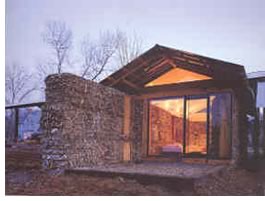 Blended
masterfully with the text are the photographs. Timothy Hursley works his
well-known magic as he captures the buildings under construction, in use,
and within their (sometimes decidedly threadbare) context. You may have
read about Mason's Bend Community Center, with its exterior wall of overlapping
car windshields shielding the entranceway from the areas 60 inches of
annual rain. With this book, you feel as if you have experienced it.
Blended
masterfully with the text are the photographs. Timothy Hursley works his
well-known magic as he captures the buildings under construction, in use,
and within their (sometimes decidedly threadbare) context. You may have
read about Mason's Bend Community Center, with its exterior wall of overlapping
car windshields shielding the entranceway from the areas 60 inches of
annual rain. With this book, you feel as if you have experienced it.
The one disturbing thing about reading this book is that we know what the author did not when writing it. Although referred to throughout in the present tense and speaking of future plans for the Rural Studio's work, Mockbee died just after this book went to press. Just so you'll know: The work goes on of providing, as Mockbee put it, "a warm, dry house with a spirit to it" to those most in need. Ruth continues to direct the work of the Rural Studio students and faculty despite their sudden and staggering loss.
You can order Rural
Studio from the AIA Bookstore, ($27 AIA members/$30 retail, plus
$6 shipping per order): phone 800-242-3837
option #4; fax 202-626-7519; or
send an email.
—DG
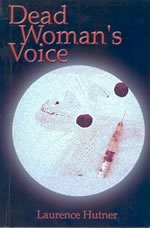 Architect
as Action Hero
Architect
as Action Hero
Dead Woman's Voice, by Laurence
Hutner, AIA (AmErica House, 2001)
Writing those specs getting a tad mundane? Sketching schematics for that
renovation seem a little ho-hum? Conversing with contractors leave you
stifling a yawn? Well, then, escape with Hector Garcia, architect-wunderkind
extraordinaire, who has his hands full as he battles devious plots to
blow up him and the woman he loves, outsmarting savage competitors who
destroy his multimillion dollar practice in Los Angeles, and dealing with
what has to be the baddest contractor on the planet (not to mention his
potential father-in-law).
Hector is the brainchild of Laurence M. Hutner, AIA, who, following a recent move from Los Angeles to central Virginia, traded in retirement for a new career in fiction writing. Hector's profession is absolutely central to Dead Woman's Voice, and knowledge of that profession is sure to help the reader gain insight into the psyches of the characters, good and bad. Without giving too much of the twist-and-turn plot away, suffice it to say that the ultimate weapon in this personalized fight of good against evil turns out to be—what else?—a building.
You can order Dead
Woman's Voice in large-format paperback from AmErica House, www.PublishAmerica.com
for $21.95 plus shipping; or from Amazon.com.
—SS
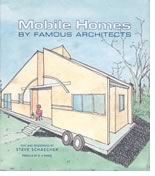 A
Very Moving Portrayal of Architecture
A
Very Moving Portrayal of Architecture
Mobile Homes by Famous Architects,
by Steve Schaecher, AIA (Pomegranate Press, 2002). The architect who brought
you Outhouses by Famous Architects
two years ago now gifts you with mobile homes done up in the same fashion—and
if you liked the first, you'll love the second. Steve Schaecher is up
to his old tricks, making us laugh by combining his cartooning skills
with some wacky essays about starchitects plying their formidable talents
and philosophies to mobile home design.
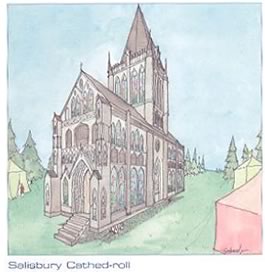 It
all starts with the Mobilisk, created by the Egyptians circa 3200 B.C.:
"To properly accommodate their royalty, Egyptians became the first
society to develop the mobile home or Mobilisk. These dwellings resembled
the Egyptians; monuments to their gods, but they were equipped with all
the ancient-day conveniences: a harem, a grape holder, and plenty of locust
repellent." Schaecher skips through history, presenting 29 examples
of moving architecture, including Salisbury Cathed-roll, Motor Dame du
Haut, and ending with the Guggenheim Cruise-Seum, which bears a strong
resemblance to a building in Bilbao we all know and love.
It
all starts with the Mobilisk, created by the Egyptians circa 3200 B.C.:
"To properly accommodate their royalty, Egyptians became the first
society to develop the mobile home or Mobilisk. These dwellings resembled
the Egyptians; monuments to their gods, but they were equipped with all
the ancient-day conveniences: a harem, a grape holder, and plenty of locust
repellent." Schaecher skips through history, presenting 29 examples
of moving architecture, including Salisbury Cathed-roll, Motor Dame du
Haut, and ending with the Guggenheim Cruise-Seum, which bears a strong
resemblance to a building in Bilbao we all know and love.
You can order Mobile
Homes by Famous Architects from the AIA Bookstore, (16.15 AIA members/$17.95
retail, plus $6 shipping per order): phone 800-242-3837
option #4; fax 202-626-7519; or
send an email.
—SS
Copyright 2002 The American Institute of Architects. All rights reserved.
![]()
|
|
|